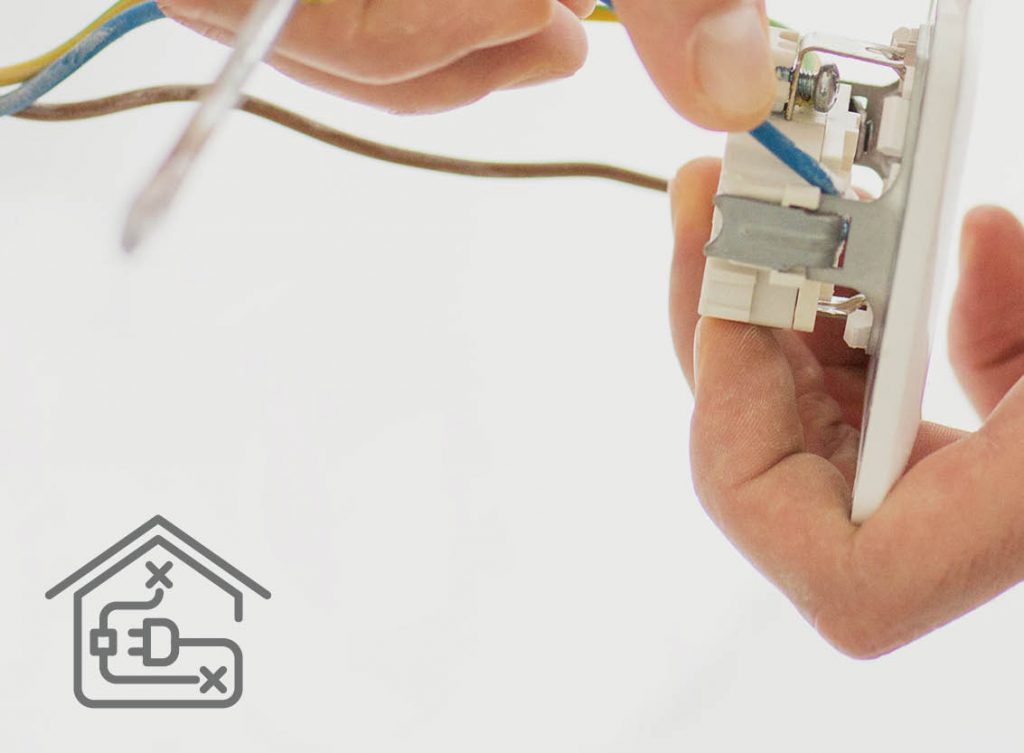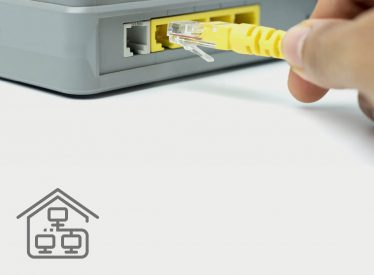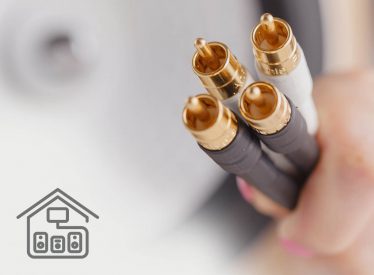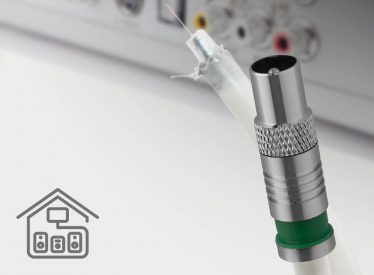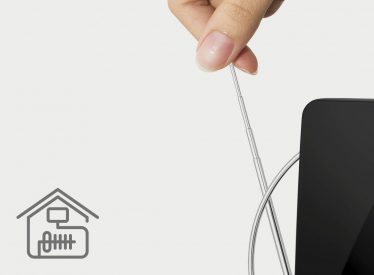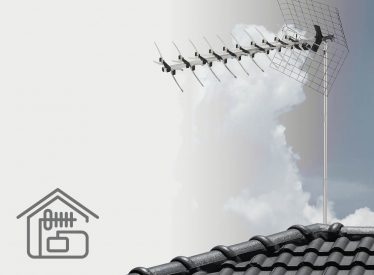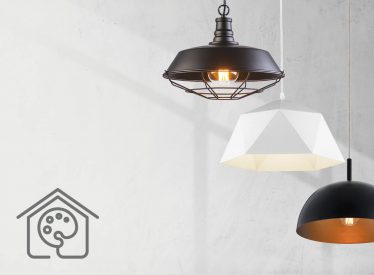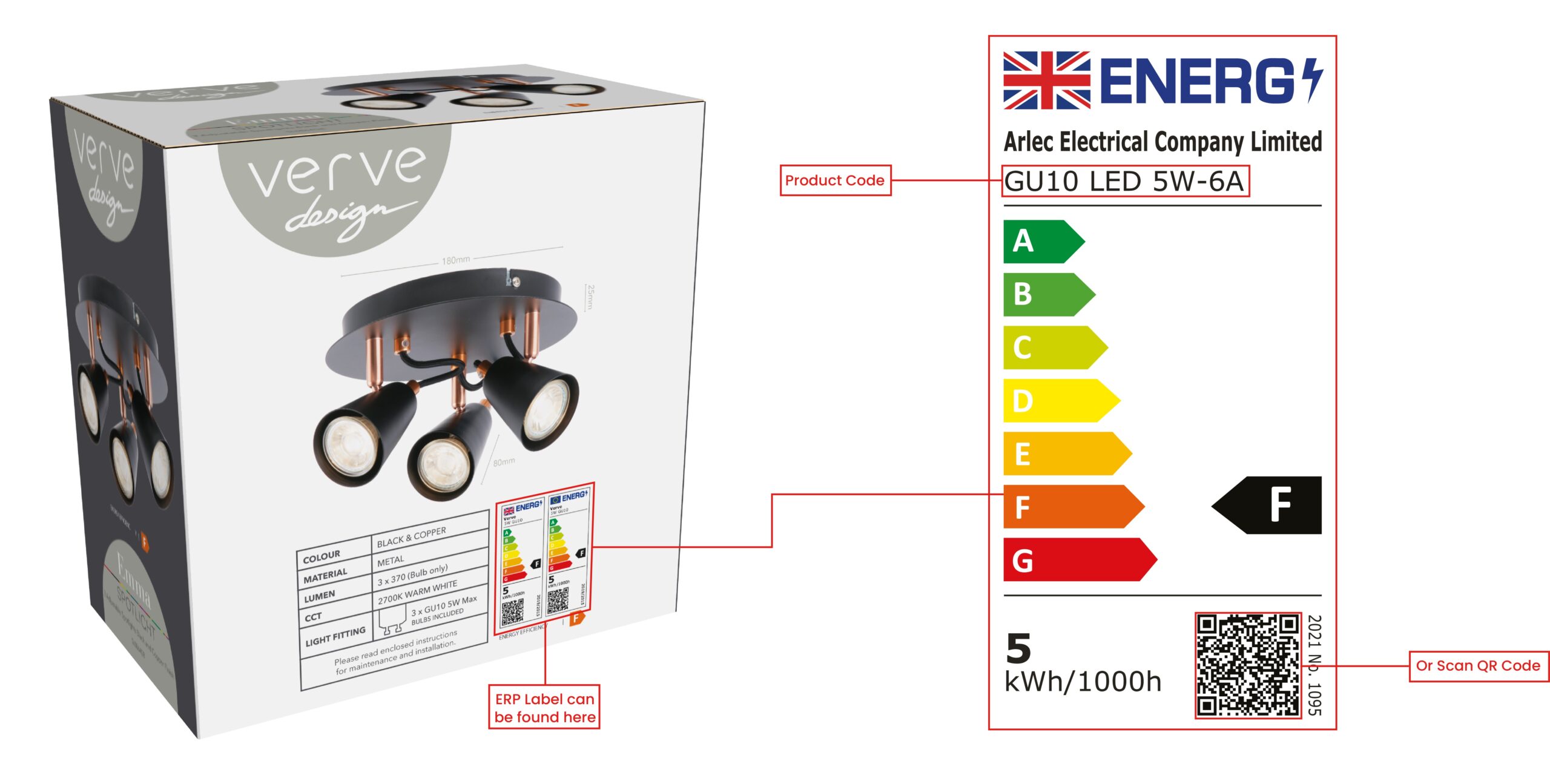Overview
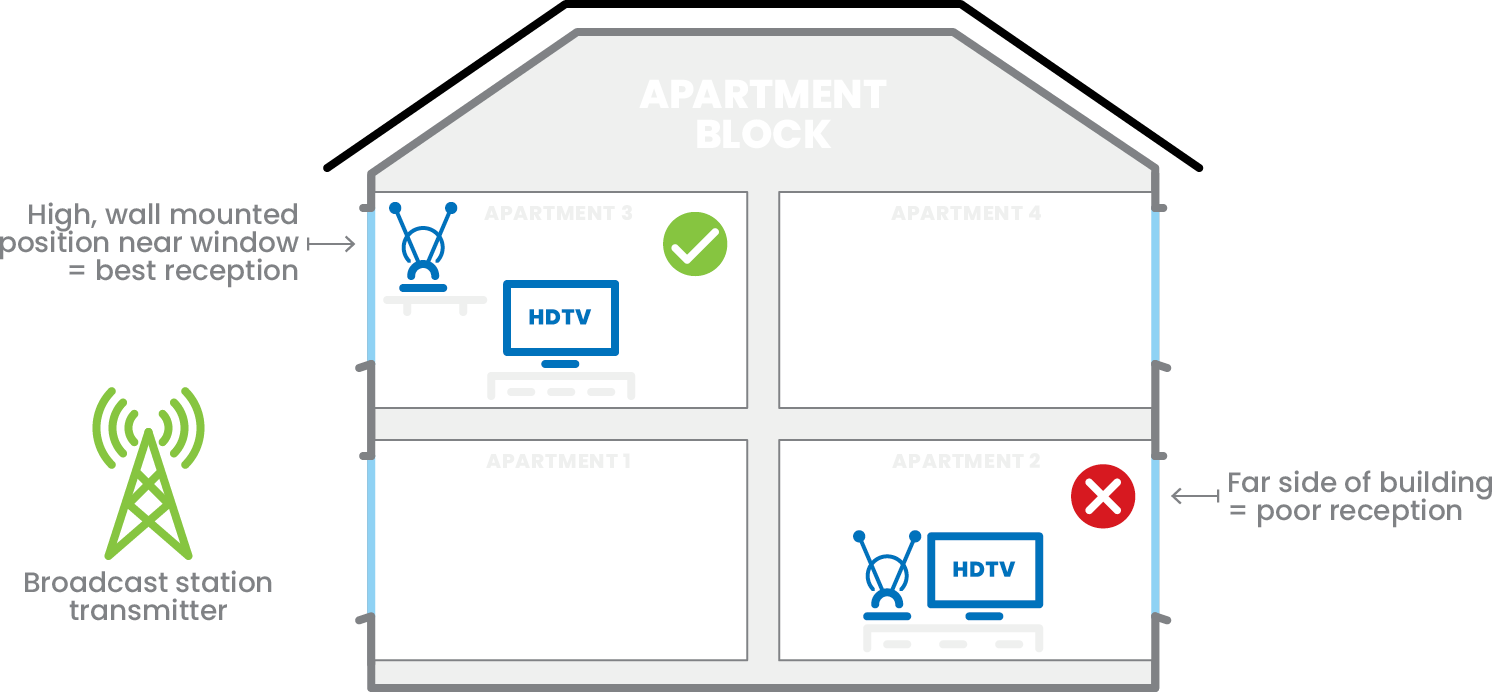
An overview of a typical Indoor Antenna installation setup.
An Indoor TV antenna is ideal to use where there is no access or not possible to install an outdoor antenna, they are compact and easy to install with various form factors and installation options.
Indoor TV antennas are for use in Prime area locations close to the broadcast towers where there is good signal reception. If the TV reception is bad, it is always recommended to use an outdoor antenna or other alternatives as outdoor TV Antenna offers more reliable and hassle-free TV reception.
Transmitter signal
First step is to determine the location of the TV transmitter antenna that has the best signal coverage in your area. There are multiple TV transmitter antennas spread across the country to ensure there is maximum signal coverage. This information is available on http://www.digitaluk.co.uk/coveragechecker, where you can check your TV reception signal strength in your area.
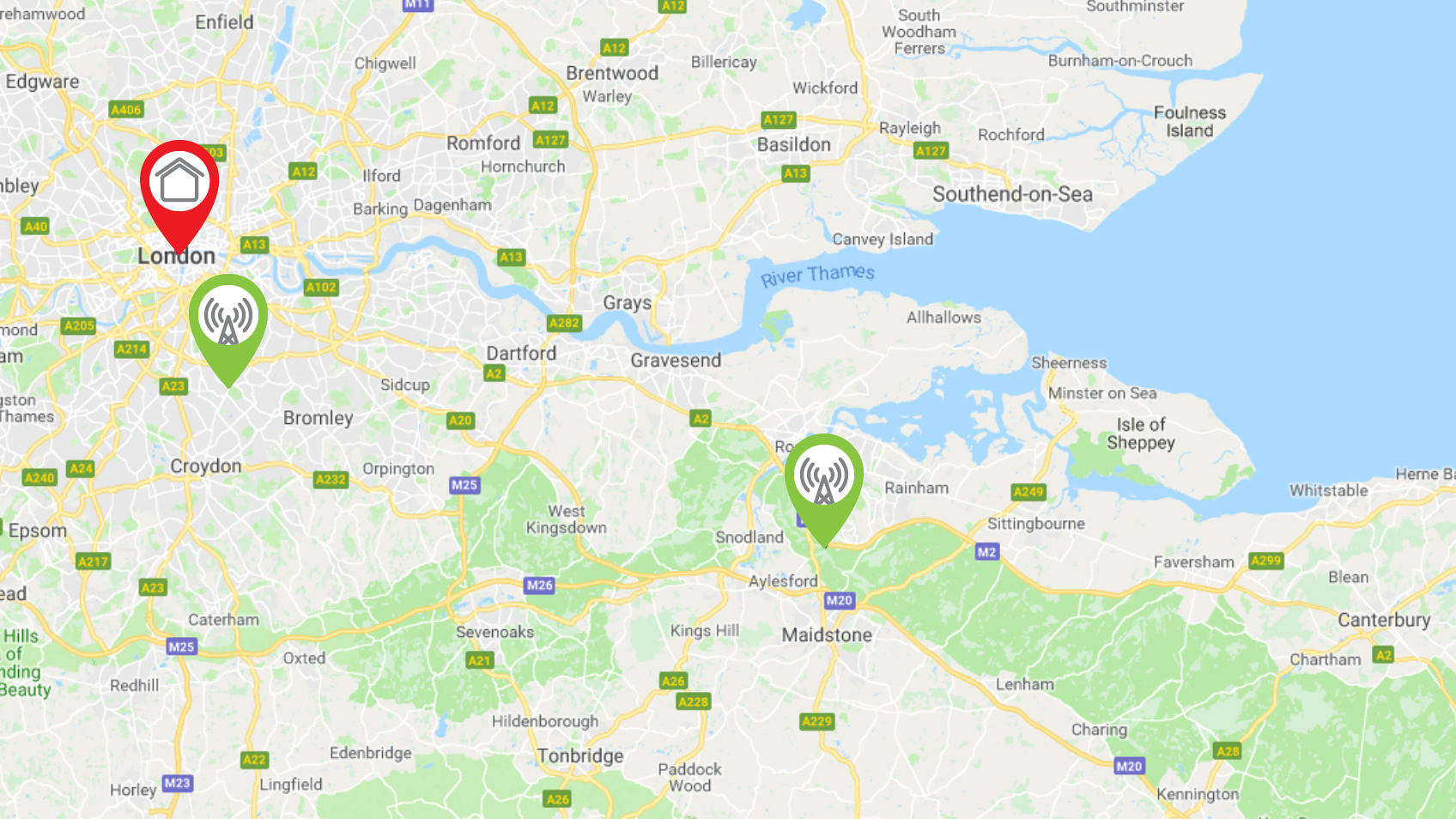
- This is a free government website and gives the latest information of the antenna signal strength in the area. It classifies signal strength into.
- This information is useful to choose the antenna and the direction you need to point the antenna in.
Disclaimer
Additional content required…

Disclaimer
Arlec has no direct control over the content of the website, or the changes that may occur to the content on the website.
Links to external websites are provided in good faith.
We cannot warranty or represent the accuracy of the information and do not accept responsibility for errors or omissions
on the website.
Antenna Type
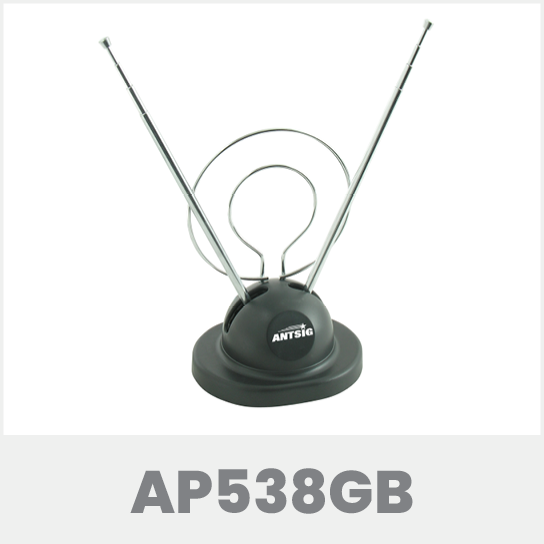
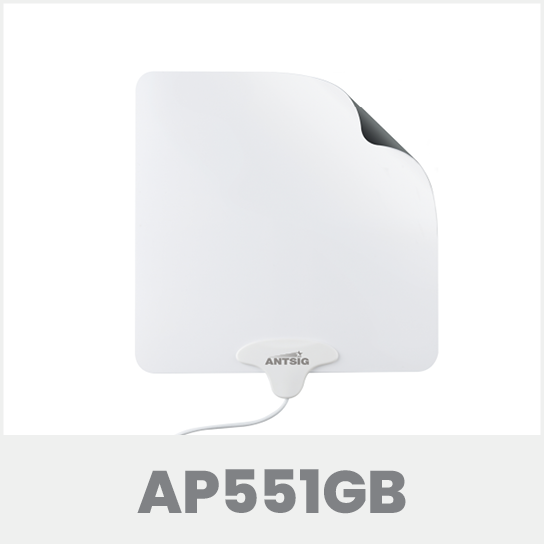
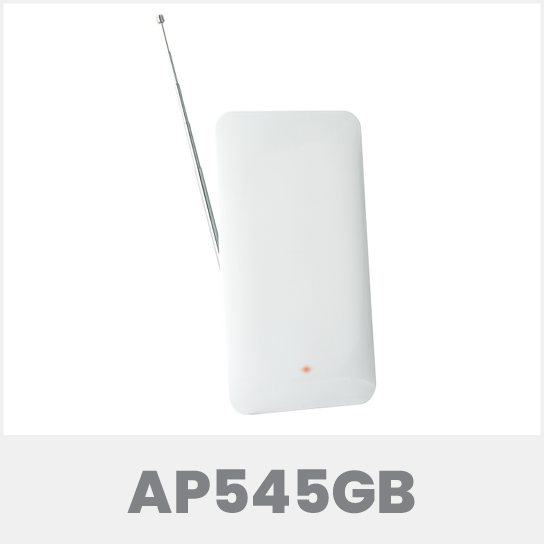
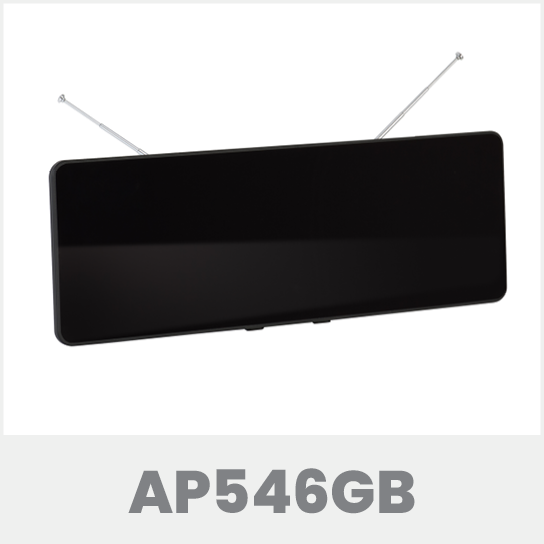
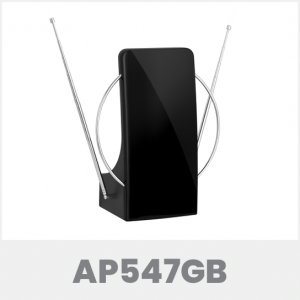
The next step is to choose the antenna, our antennas are classified into two categories for easy selection:
• Rabbit ears – These are the very basic antennas and can be plugged directly into the TV, they do not use any external
power.
• Amplified antenna – These antennas are bigger in size compared to rabbit ears and have an adjustable or fixed gain
to boost the signal that the antenna receives. These antennas need to be powered and plugged into a wall outlet.
It is usually recommend to use the amplified antenna unless you have a line of sight from the indoor antenna to the
transmission tower.
Installation Steps
Antenna Installation
It is trickier and more of a hassle to install an indoor antenna than an outdoor antenna. It requires a lot of patience, trial
and error to setup. Following the steps below will guide you step by step to set up the antenna in the best possible way.
Position and Direction
-
- Once you determine the direction of the TV transmission tower on the ‘digital UK’ website, the indoor antenna needs to
be facing that direction of transmission ideally. A compass and/or map can also help. - Position in location:
–At an elevated position, closest point to the broadcast transmitter, avoiding any obstructions between the antenna and the broadcast transmitter;
— Away from sources of RF noise – i.e. motors, power cables etc. - The more obstacles there are the between the transmission tower and the antenna the weaker the signal gets, so it is
good to place the antenna near a window or as close as possible to the transmission tower.
- Once you determine the direction of the TV transmission tower on the ‘digital UK’ website, the indoor antenna needs to
Retune the TV after setting up the antenna to see if it picks up any signal, if the TV picks up the channels, note the position
and fix the antenna so it is stable, if no channels are picked up make minor adjustments to the telescopic antenna or the
loop until there is TV reception.
Gain Adjustment Models
For indoor antenna with gain adjustment option follow the above steps with Gain in the lowest setting, slowly increase
the Gain until there is satisfactory signal. Avoid setting gain higher than necessary as too much signal is not good for the
signal reception.
Troubleshooting
Key points to remember
• Your position to transmitter towers
• Mount antenna high as possible with fewest obstructions
• Keep cable lengths to a minimum
• TV Reception can be lost from time to time depending on external factors like weather and interference. To fix this
issue, minor adjustments to the gain and antenna position needs to be made.
Pixelation/no signal
Digital TV sets now require the received signal level to be within its operating boundaries. A signal level between 45dBuV
and 80dBuV is most ideal and will present a perfect picture. If the signal is outside of these levels pixelation will occur
whether it is too much or too little. The most likely causes of pixelation will be poor signal collection.
To fix/prevent pixelation you can try the following:
• Check antenna direction;
• Check gain setting to adjust hi or low;
• Check for sources of interference and noise – power cables, exhaust fans, air-conditioners, etc. Try to avoid running
coax cable within close proximity to these.

